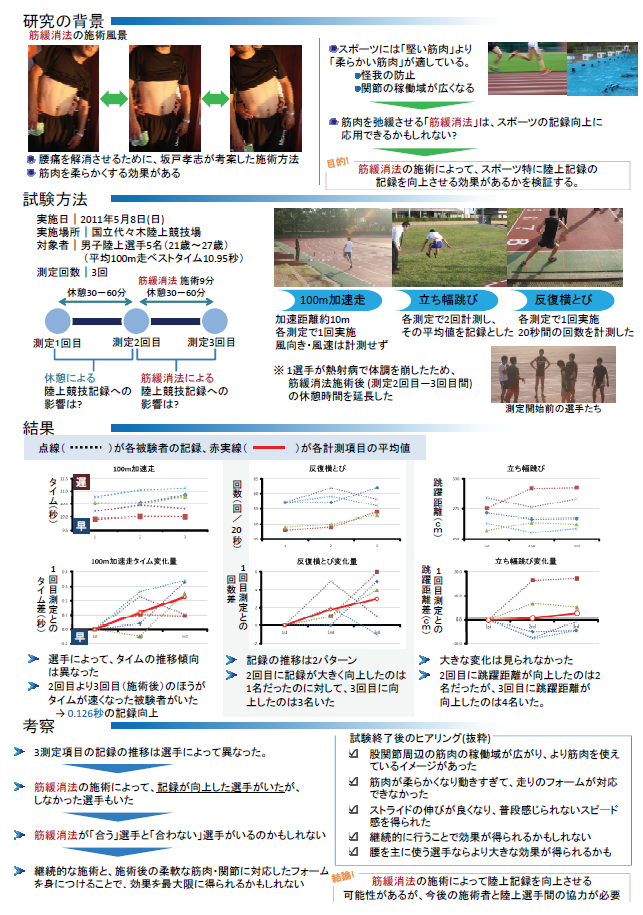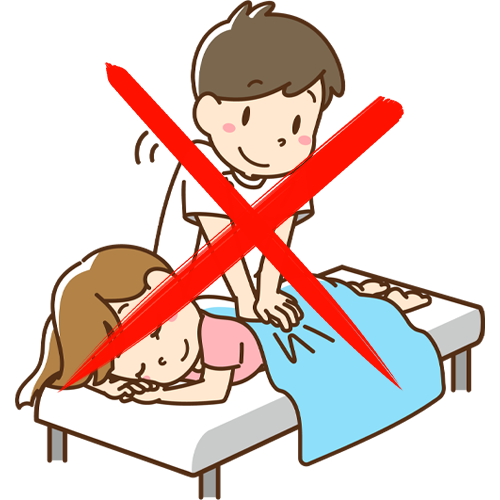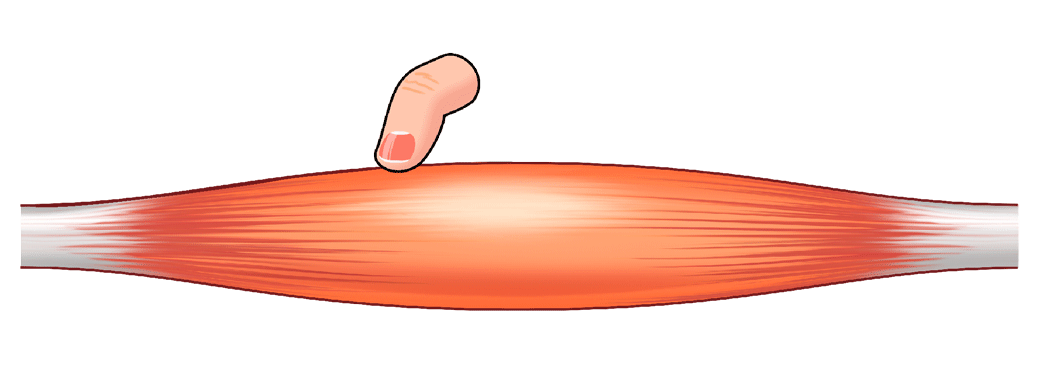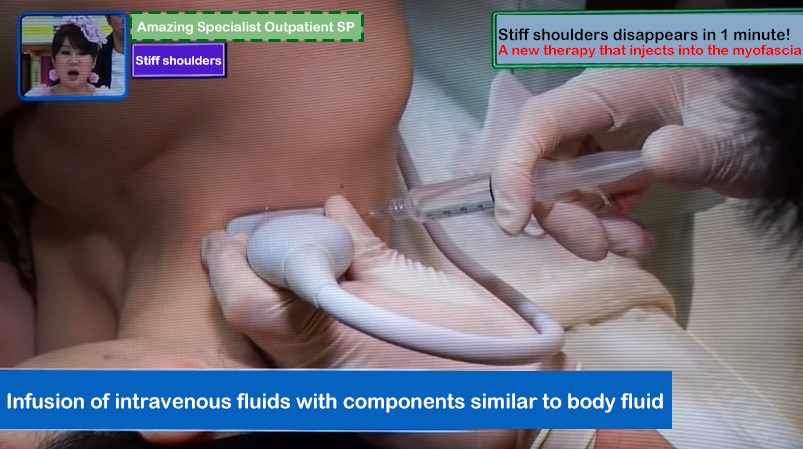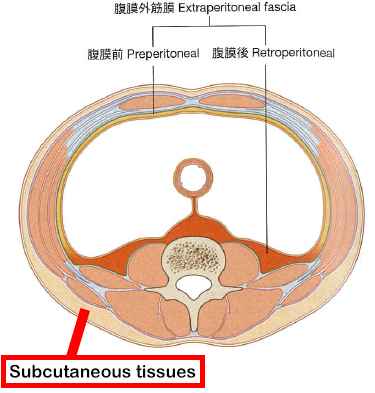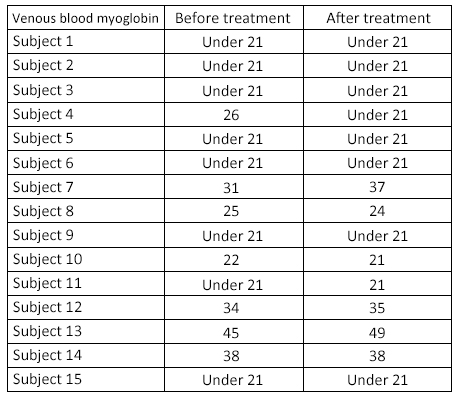What is "kanshoho"?
Explanatory Video
What is "kanshoho"?
“kanshoho” is a manual therapy and a novel muscle relaxation technique developed in 2007.
Key features include non-invasiveness and the absence of muscle damage (※1) during muscle relaxation, making it exceptionally easy to master with high reproducibility.
With “kanshoho”, muscles become so soft that they can be described as being in an “almost tension-free state.”
(※The photo on the right shows the lumbar area.)
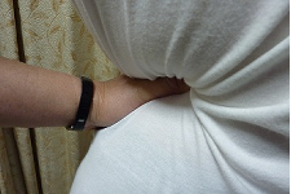
The term “almost tension-free state” is essentially synonymous with reduced muscle tension and is often described as “muscles becoming as soft as marshmallows.”

Rocky Mountain Marshmallow – Horizontal
Separated by Tissue Paper – Hardness 33
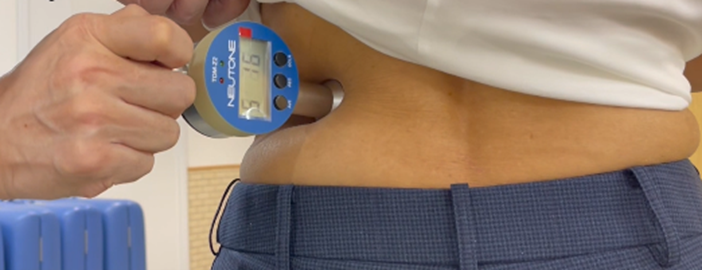
Muscles after “kanshoho” Treatment – Muscle Hardness 16

Rocky Mountain Marshmallow – Horizontal
Separated by Tissue Paper – Hardness 33

Muscles after “kanshoho“
Treatment – Muscle Hardness 16
After the “kanshoho” treatment, you can see from the hardness meter that the hardness is about 1/2 that of marshmallow (less than 20).
Patients complaining of lower back pain often have muscle hardness levels above 50, making “kanshoho” a reliable method for pain relief. For more details, refer to ‘Muscle Relaxation and “kanshoho”.‘
We presented at the 66th Japan Society of Physical Fitness and Sports Medicine that “kanshoho” treatment doesn’t lead to muscle strength reduction, making it ideal for enhancing athletes’ performance.
By inducing muscles into an almost tension-free state, “kanshoho” offers potential improvements in various conditions caused by muscle tension, rigidity, such as chronic pain, circulatory problems, nerve disorders, and conditions arising from reduced muscle hormone secretion.
We presented at the 66th Japan Society of Physical Fitness and Sports Medicine that “kanshoho” treatment doesn’t lead to muscle strength reduction, making it ideal for enhancing athletes’ performance.
By inducing muscles into an almost tension-free state, “kanshoho” offers potential improvements in various conditions caused by muscle tension, rigidity, such as chronic pain, circulatory problems, nerve disorders, and conditions arising from reduced muscle hormone secretion.
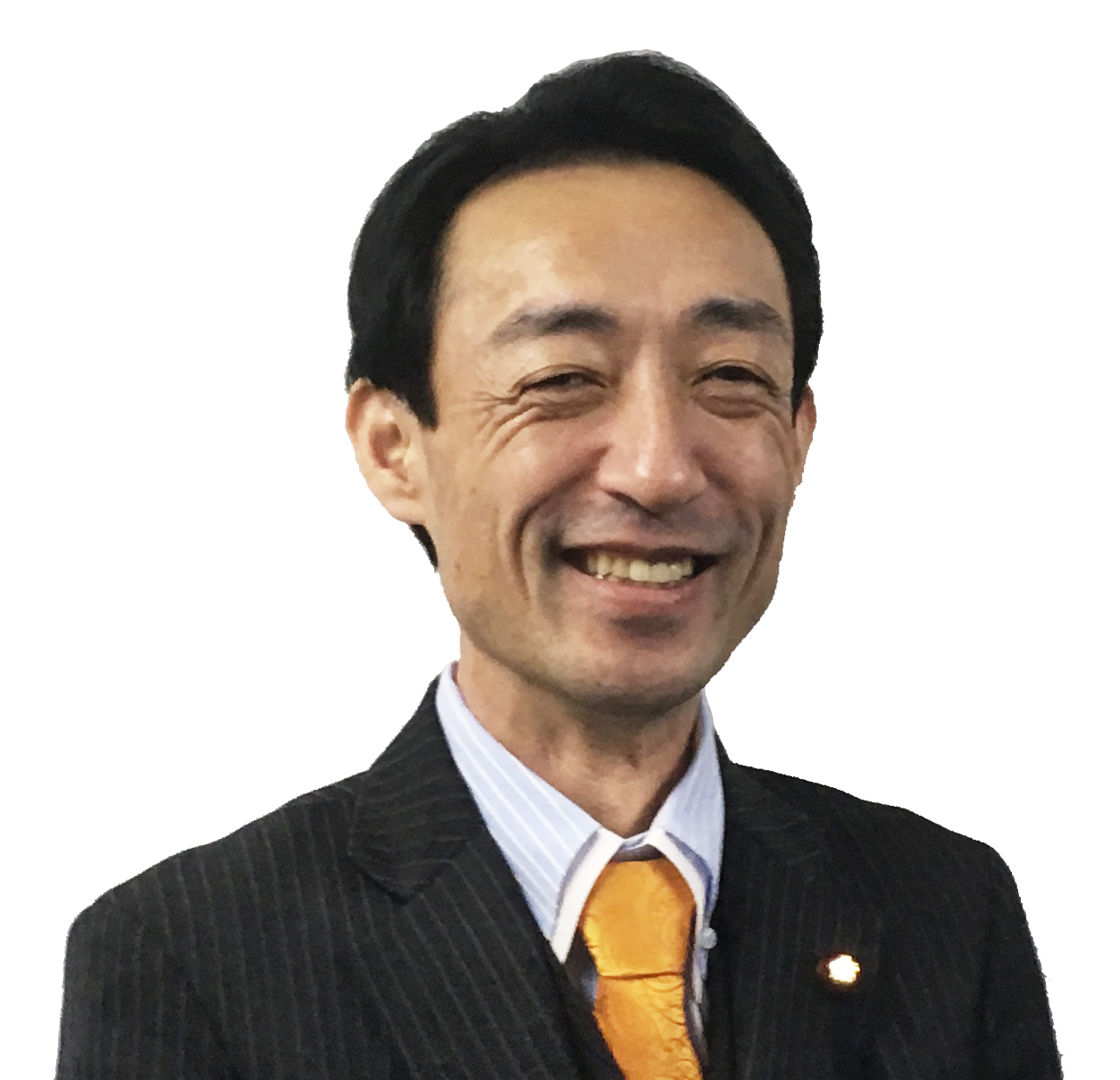
Takashi Sakato
Representative of Japan Health Organization(JHO)
Tokyo, General Director of Pain Treatment Facility
muscle physiologist ・physical therapist
“kanshoho” was developed on May 16, 2007, by muscle physiologist Takashi Sakato (※2).
It is a manual therapy designed to convert the gelification (※5) of interstitial tissues (※3), including fascia (※4), into solization (※6).
“kanshoho” was developed on May 16, 2007, by muscle physiologist Takashi Sakato (※2).
It is a manual therapy designed to convert the gelification (※5) of interstitial tissues (※3), including fascia (※4), into solization (※6).

Takashi Sakato
Representative of Japan Health Organization(JHO)
Tokyo, General Director of Pain Treatment Facility
muscle physiologist ・physical therapist
“kanshoho” fundamental technique involves ,
applying a spherical object (such as a fingertip) to an area of approximately 1 cm² on a tense muscle, pressing it perpendicularly against the muscle fibers with about 500 gf of pressure, all while stretching and contraction the muscle. This is a hands-on therapy designed to induce muscle relaxation.

This therapy is patented in the United States (※7). It differs from massage approaches targeting static muscles, as it focuses on muscles undergoing stretching and contraction.
Through this movement, it induces unbalanced motion in muscle fibers, transforms the gel to sol structure of the fascia, and achieves a state of virtually no muscle tension.
In recent years, there has been an increase in research reports regarding the myofascia, which is a part of the interstitium. This is highly encouraging.
One of the theories related to the myofascia is “Anatomy Trains” (※8).
The myofascia of muscles is interconnected, forming a continuous “line” throughout the body. Therefore, abnormalities or issues occurring in certain myofascia or muscles are believed to potentially affect remote areas through the associated “lines”.

(Source: “Anatomy Train, 4th Edition, 2022,” p. 80, 100)
Furthermore, theories related to myofascia, such as “Anatomy Trains,” have inspired treatments like hydrorelease(※9) or myofascialrelease (※10). It‘s heartening to see a growing number of healthcare professionals addressing the connection between muscles and pain.
Hydrorelease and myofascialrelease techniques primarily target the larger fascial compartments, especially the epimysium (※11), aiming to improve movement. There’s potential for these approaches to positively impact even the perimysium.
On the other hand, “kanshoho” can improve the movement of the interstitium (including the entire fascia, which consists of epimysium, perimysium, and endomysium), and furthermore, by transforming the interstitium from a gel to a sol state, it achieves a state of virtually zero muscle tension.
Therefore, thanks to “kanshoho”, it’s possible to achieve relaxation from the body surface down to the muscles, making the subcutaneous tissues and muscles so soft that they can be described as being in a virtually zero tension state.
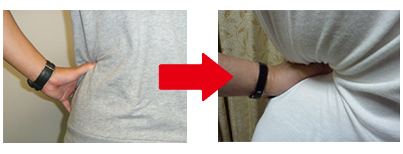
Today, as it’s evident that muscles play a significant role in pain and illness, let’s incorporate “kanshoho” into the fundamental improvement of pain and disease and work together to help as many patients as possible.
(*1) During the clinical trial reported in Hirozumi Sakaguchi et al’s study titled “The Effect of “kanshoho” on Low Back Pain (Lumbago)” published in the Japanese Journal of Integrative Medicine in 2012, it was noted that some individuals had levels of myoglobin below the detection limit, while those with levels above the detection limit did not exhibit significant fluctuations due to the treatment.
(Myoglobin detection threshold: Less than 70 ng/mL, as of October 3, 2017)
(*2) Takashi Sakato official website https://www.471203.com
(*3) Interstitium refers to the fluid-filled space between the tissues and organs throughout the body, often referred to as the interstitial space. Further details can be found in the article titled ‘Interstitium and Fascia.’
(*4) Fascia refers to a tissue that includes the ability to respond to mechanical stimulation present in the interstitium. More details can be found in the article titled ‘Interstitium and Fascia.’
(*5) Gel refers to a jelly-like substance, and gelation substances are fibrous proteins within the interstitium, such as collagen, reticulin, proteoglycans, fibronectin, laminin, and other gel-like substances.
(*6) Sol refers to the transformation of a gel-like substance into a liquid state.
(*7) US patent search ‘espacenet site’ ‘US Patent Office’
(*8) ”Anatomy Trains” is a musculoskeletal theory proposed by Thomas Myers, suggesting that the body is formed as a whole through the continuity of muscles and myofascia throughout the body.
(*9) ”Hydrorelease” is a procedure where fluids such as physiological saline, low-concentration anesthetics, and hyaluronic acid are injected into parts of the interstitium, including the epimysium and around nerves.
(*10) ”Myofascialrelease” is a procedure aimed at improving the sliding of the epimysium, which is part of the interstitium.
(*11) ”Epimysium” refers to the membrane that envelops the outer surface of muscles. Details can be found in “Fascia and Kanshoho.”
(*1) During the clinical trial reported in Hirozumi Sakaguchi et al’s study titled “The Effect of “kanshoho” on Low Back Pain (Lumbago)” published in the Japanese Journal of Integrative Medicine in 2012, it was noted that some individuals had levels of myoglobin below the detection limit, while those with levels above the detection limit did not exhibit significant fluctuations due to the treatment.
(Myoglobin detection threshold: Less than 70 ng/mL, as of October 3, 2017)
(*2) Takashi Sakato official website https://www.471203.com
(*3) Interstitium refers to the fluid-filled space between the tissues and organs throughout the body, often referred to as the interstitial space. Further details can be found in the article titled ‘Interstitium and Fascia.’
(*4) Fascia refers to a tissue that includes the ability to respond to mechanical stimulation present in the interstitium. More details can be found in the article titled ‘Interstitium and Fascia.’
(*5) Gel refers to a jelly-like substance, and gelation substances are fibrous proteins within the interstitium, such as collagen, reticulin, proteoglycans, fibronectin, laminin, and other gel-like substances.
(*6) Sol refers to the transformation of a gel-like substance into a liquid state.
(*7) US patent search ‘espacenet site’ ‘US Patent Office’
(*8) ”Anatomy Trains” is a musculoskeletal theory proposed by Thomas Myers, suggesting that the body is formed as a whole through the continuity of muscles and myofascia throughout the body.
(*9) ”Hydrorelease” is a procedure where fluids such as physiological saline, low-concentration anesthetics, and hyaluronic acid are injected into parts of the interstitium, including the epimysium and around nerves.
(*10) ”Myofascialrelease” is a procedure aimed at improving the sliding of the epimysium, which is part of the interstitium.
(*11) ”Epimysium” refers to the membrane that envelops the outer surface of muscles. Details can be found in、“Fascia and Kanshoho.”
